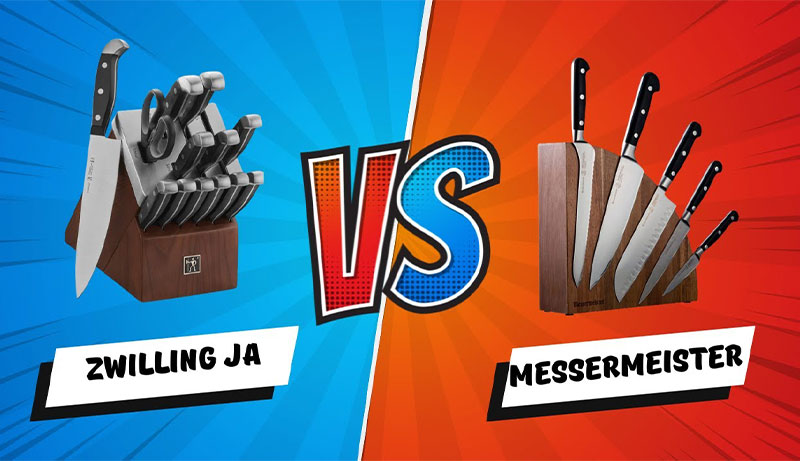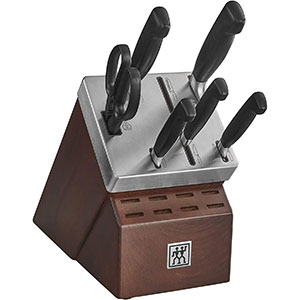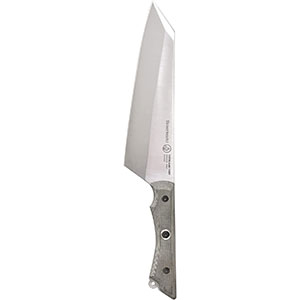As an affiliate, we may earn a commission from qualifying purchases. We get commissions for purchases made through links on this website from Amazon and other third parties.
One of the greatest kitchen items you can buy is a good knife.
Cooking will become not only simpler but also more fun as a result.
ZWILLING JA Henckels and Messermeister are two excellent brands that frequently spring to mind when purchasing a decent kitchen knife.
I’m going to compare and contrast these two top brands in this essay. I’ll go into great detail about each, describing where they are created, the materials they are composed of, and the price differential.
You should be able to choose the ideal knife for your requirements using the information in this article.
Messermeister and ZWILLING JA Henckels knives are extremely comparable in terms of both price and quality. They are made in the same German city and share a lot of the same materials. The primary distinction is in the design; whereas Messermeister’s premium lines have a very contemporary and sleek appearance, ZWILLING JA Henckels knives have a very traditional appearance.
ZWILLING JA Henckels vs Messermeister – Where are they made
Since their introduction in 1731, ZWILLING JA Henckels knives have been made in the German city of Solingen.
ZWILLING Knives with the simple label “JA Henckels” should not be mistaken with JA Henckels. ZWILLING knives are clearly identified by the emblem of the two stick-like individuals.
Without the ZWILLING logo, JA Henckels knives are not produced in Germany.
A sizable organization, ZWILLING, is the owner of several knife brands. ZWILLING knives are often recognized as premium products.
JA Henckels is the most well-known brand in the ZWILLING group, but the company also owns the unexpected Japanese-made brands Kramer and Miyabi.
Since its introduction in 1985, Messermeister Knives have also been made in the German city of Solingen.
Messermeister, which translates to “Knife Master” in German, has always placed an emphasis on cutting-edge design while drawing inspiration from German classics.
The bolsterless heel was initially used in a western knife by Messermeister’s inventor, Bernd Dressler, and is now a common feature of all modern western knives.
Although both of these brands create their knives in Solingen, Germany, the center of the German knife industry, ZWILLING has by far the longest history.
ZWILLING JA Henckels vs Messermeister – What is the difference
It is evident that the quality of ZWILLING JA Henckels and Messermeister is fairly close. They are produced in the same city and make use of many of the same resources.
As a result, if you’re deciding between the two, you may relax knowing that there isn’t much of a difference in either quality or cost. Only one significant distinction remains between the two.
The design is the primary distinction between ZWILLING JA Henckels and Messermeister knives. Messermeister knives are more fashionable in my opinion, and their Royale and Oliva Elite series are very lovely. Knives made by ZWILLING JA Henckels have a significantly more traditional design.
Both of these brands are of comparable quality and have been constructed in the conventional western manner, keeping longevity in mind.
The collections’ designs are really what distinguish them the most. Knives made by ZWILLING JA Henckels are extremely conventional.
Messermeister knives, particularly their premium models, are significantly more svelte and fashionable.
Which is best for you: ZWILLING JA Henckels vs Messermeister
Any knife you choose will be of high quality, long lasting, balanced, and pleasant to grip. There isn’t much of a quality difference between them because they are made with practically identical materials and in the same city.
Particularly in the premium collections, the design is what distinguishes the knives the most.
Knives made by ZWILLING JA Henckels always have a timeless appearance; they are quite traditional, and I believe that appeals to a lot of people. Because ZWILLING JA Henckels are so bland in terms of appearance, it’s impossible to detest the way they seem. They essentially have the same appearance that a kitchen knife should.
But Messermeister, particularly in their premium lines, chooses a more contemporary and trendy style, employing American Walnut and Olive Wood for their handles, which truly produces an amazing appearance.
Even while they don’t function significantly better than ZWILLING JA Henckels, they do have a nice appearance.
You can be confident that whichever knife you choose, whether you prefer the traditional design of ZWILLING JA Henckels knives or the contemporary design of Messermeister knives, you won’t be losing out on a significant difference in quality.
My ZWILLING JA Henckels Recommendation
The ZWILLING JA Henckels Professional S is a great choice.
The steel is highly unlikely to corrode or chip, making it perfect for busy kitchens.
The handle is made of POM thermoplastic, so there is almost no risk that it will warp or crack from the moisture and temperature changes that are typical in the kitchen.
One of the greatest examples of a high-quality western chef’s knife you’ll find, it’s a fantastic knife.
My Messermeister Recommendation
I’ve chosen to recommend a piece from Messermeister’s premium line, particularly the Oliva Elite line.
It’s a gorgeous knife. I believe it to be the most beautiful western-style chef’s knife now on the market, and the primary distinction between Messermeister and ZWILLING JA Henckels blades is found in the designs of their premium collections.
It is still extremely robust because it is made of the same steel as the ZWILLING JA Henckels, but because of the Olive Wood handle’s stunning polish, it stands apart from other knives.
You will have to avoid doing things like soaking it in the kitchen sink since it would obviously cause the wood to distort over time because olive wood won’t be quite as sturdy as the POM thermoplastic used on their flagship Meridian Elite series.
Olive wood is still a suitable choice for knife handles since it is sturdy and firm, although it is difficult to match the synthetic durability of materials like POM with natural materials.
There aren’t many better options than this Messermeister Oliva Elite if you want to add a little elegance to your kitchen since it’s a superb knife.




